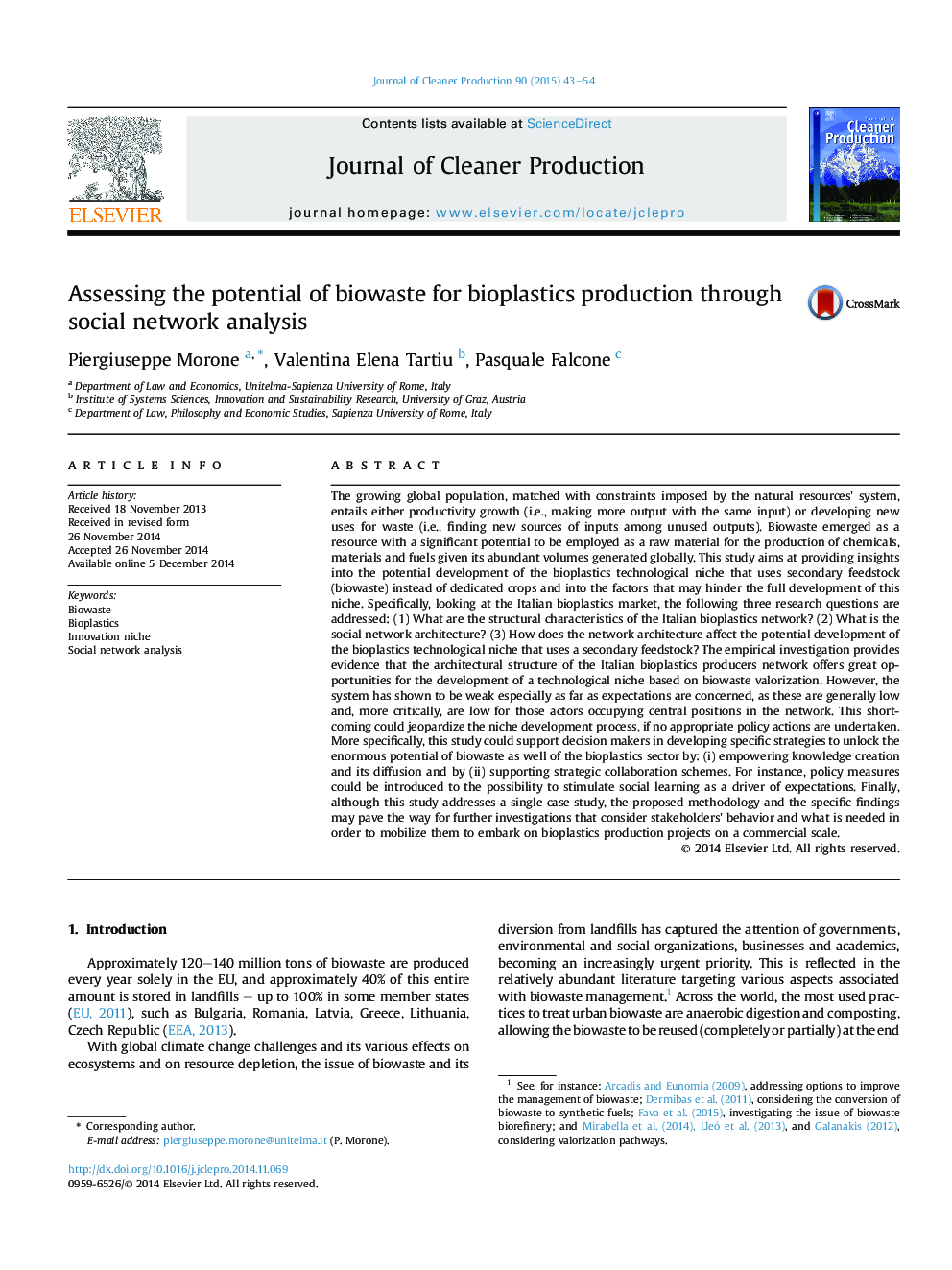| کد مقاله | کد نشریه | سال انتشار | مقاله انگلیسی | نسخه تمام متن |
|---|---|---|---|---|
| 1744659 | 1522156 | 2015 | 12 صفحه PDF | دانلود رایگان |
• The potential development of the bioplastics technological niche is investigated.
• The Italian bioplastics niche is well connected and highly dense.
• Niche actors are knowledgeable, but there is an inefficient use of resources.
• The weakest feature of the niche is actors' low expectations of its development.
• Featured weakness might jeopardize the overall niche development process.
The growing global population, matched with constraints imposed by the natural resources' system, entails either productivity growth (i.e., making more output with the same input) or developing new uses for waste (i.e., finding new sources of inputs among unused outputs). Biowaste emerged as a resource with a significant potential to be employed as a raw material for the production of chemicals, materials and fuels given its abundant volumes generated globally. This study aims at providing insights into the potential development of the bioplastics technological niche that uses secondary feedstock (biowaste) instead of dedicated crops and into the factors that may hinder the full development of this niche. Specifically, looking at the Italian bioplastics market, the following three research questions are addressed: (1) What are the structural characteristics of the Italian bioplastics network? (2) What is the social network architecture? (3) How does the network architecture affect the potential development of the bioplastics technological niche that uses a secondary feedstock? The empirical investigation provides evidence that the architectural structure of the Italian bioplastics producers network offers great opportunities for the development of a technological niche based on biowaste valorization. However, the system has shown to be weak especially as far as expectations are concerned, as these are generally low and, more critically, are low for those actors occupying central positions in the network. This shortcoming could jeopardize the niche development process, if no appropriate policy actions are undertaken. More specifically, this study could support decision makers in developing specific strategies to unlock the enormous potential of biowaste as well of the bioplastics sector by: (i) empowering knowledge creation and its diffusion and by (ii) supporting strategic collaboration schemes. For instance, policy measures could be introduced to the possibility to stimulate social learning as a driver of expectations. Finally, although this study addresses a single case study, the proposed methodology and the specific findings may pave the way for further investigations that consider stakeholders' behavior and what is needed in order to mobilize them to embark on bioplastics production projects on a commercial scale.
Journal: Journal of Cleaner Production - Volume 90, 1 March 2015, Pages 43–54
